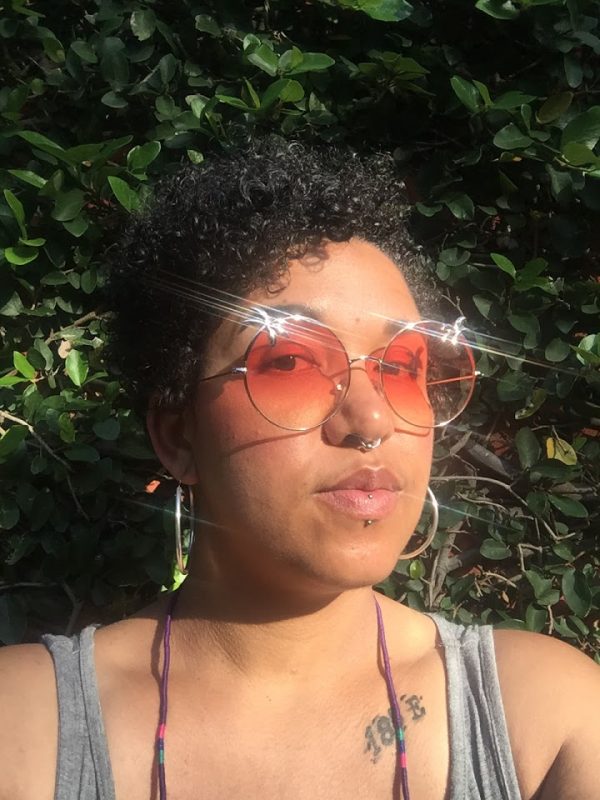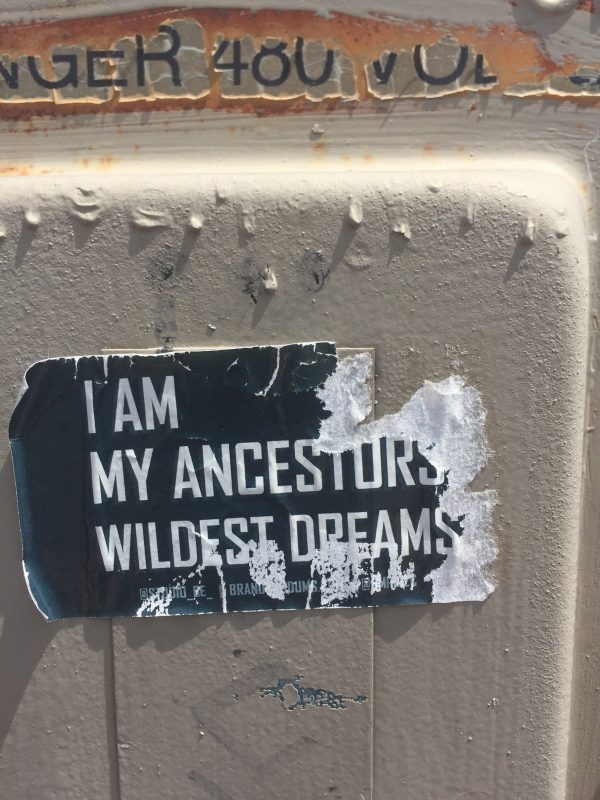This is the sixth installment of our Women’s Bike Month interview series written by Steph Routh. This content is sponsored by the Community Cycling Center and Gladys Bikes.
Samantha Taylor learned how to ride a bike when she was a kid, but cycling didn’t become a part of her life until last August, when she saw the job opening for Development Manager at the Community Cycling Center. She lives in the New Columbia neighborhood near The Hub and, in her own words, “put two and two together and realized that the Cycling Center was behind The Hub.”
“Cycling was never a mode of transportation for me before,” Taylor said. “When I learned more about trimodal transportation and transportation equity at the Cycling Center, I became a lot more interested in cycling not just as recreation but also transportation.”
Working at a nonprofit replete with bicycle access doesn’t magically remove all barriers to cycling, however. Cost and adaptive needs can still prevent cycling from being a convenient choice.
For Taylor, an e-bike turned out to make a huge difference.
“I decide whether to ride or not based on whether or not I have an accessible bike available to me,” Taylor noted. “It depends. The most that I’ve ridden a bike was this summer when I had a GenZe bike. I have chronic pain, and I have arthritis. I know that there are other people out there with similar experiences. Having an e-bike allowed me to ride comfortably in a way that suited my body’s needs.
“I want bicycling for Black folks to be a reliable and safe transportation option, but that is going to take a concerted community effort to make happen.”
— Samantha Taylor
“It’s unfortunate that e-bikes are so expensive. Since I had to give mine back, I haven’t been riding. I have an old Schwinn, and I’d like to be riding around my neighborhood, but I can’t commute on it.”
Taylor was loaned an e-bike as part of a pilot program with GenZe Bikes. The program includes an orientation to e-bikes and free access for five weeks, followed by a request for feedback. During that time, I would watch Taylor rock up to the back door of the office. It was a highlight of my morning.
“Riding an e-bike was a great way to start the morning. That was my favorite thing about it. Commuting with music and riding by myself is nice. And when people ride by and like my music, too, that is really fun. I rode it mostly for commuting, so that was 10 miles round trip per day. It was so much more conducive to transportation than recreation. But the recreation happens at the same time, which is just…fun.
Advertisement
“The e-bike is also fast, so when there were dangerous situations or a White man was intimidating me, I could just torque up and zoom off. So I had this realization of how nice it felt to not be cramped on the bus or the MAX. When I first got my bike, my roommate said that she was so glad I didn’t have to be on the bus, because it was good for my safety. But of course many of us have to take the bus in our daily lives.
“I can’t afford to already have the deck stacked against me and then contribute to that by showing up to work disheveled.”
— Samantha Taylor
“I want bicycling for Black folks to be a reliable and safe transportation option, but that is going to take a concerted community effort to make happen.”
Another consideration that Taylor has to take into account that I don’t have to think about at all ever is how Black hair will (or rather, will not) fit into and emerge from a helmet. This issue is far from trivial. As this New York Times article notes, “America has always had trouble with [B]lack hair.” Just like cycling apparel has historically been designed for men and then “shrinked and pinked” for women, helmets have not been designed with Black hair in mind.
Here are some of Taylor’s thoughts on hair, helmets, and systemic oppression:
“First, I am not the spokesperson for all Black people. Now that that’s said, I remember when I met LaQuida Landford. The first thing she said to me after saying, ‘Hey, how are you?’ was, ‘Do you wear a helmet when you ride?'”
This is a conversation that Black people have among themselves, and so the exchange with Landford is not the first, nor will it be the last, conversation Taylor has had about Black hair and helmets.
“To be presentable, to be clean, to have your hair looking right after Black people have endured hundreds of years of being called “dirty and stupid,” is important. When people call church clothes your ‘Sunday best,’ it is from when enslaved Black people would wear their best clothes on Sundays. It’s not superficial. And showing up sweaty for work is not an option.
“For me, I need to get to working looking right. I can’t just get off my bike. I have to arrive clean, professional, and then still deal with all the biases. I can’t afford to already have the deck stacked against me and then contribute to that by showing up to work disheveled, like a hot mess.
“And when my hair is longer and I have an afro, it doesn’t work. Some people have locs and braids and other protective hairstyles that helmets don’t fit over. So then what? Helmets are not made for us in mind. This is an unpopular opinion, but wearing a helmet is not a priority for me.”
As with all interviews in this series, we ended the interview by asking Taylor about her sheroes.
“I don’t know Barbara Smith’s take on cycling, but she is definitely a shero. She is the founding member of the Combahee River Collective, which was formed in 1974 and has since disbanded. It was a group of women working towards feminist values and were one of the first groups who named intersectionality, including genders outside a binary.
“Barbara Smith is a local politician in Albany in NY and a Black feminist. She is still alive and is this amazing community organizer, politician, lesbian, author, Black person. She started community organizing when she was 15 in the 1960s. She’s still alive and out there doing it.”
— Steph Routh is the communications director for the Community Cycling Center.
Never miss a story. Sign-up for the daily BP Headlines email.
BikePortland needs your support.



